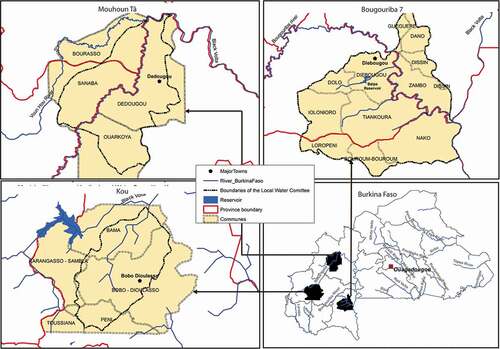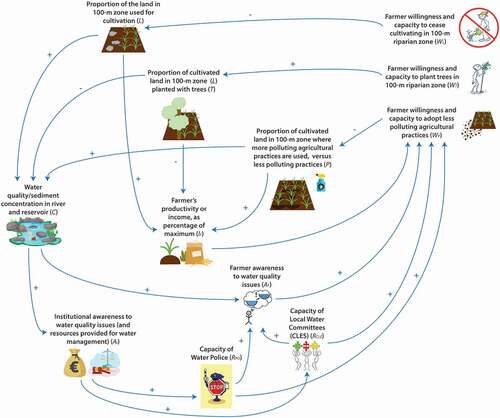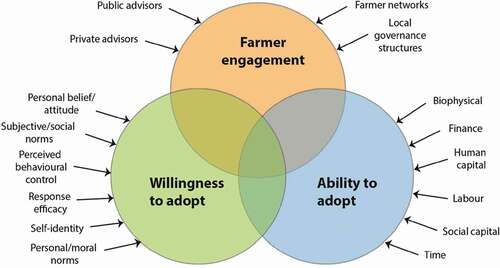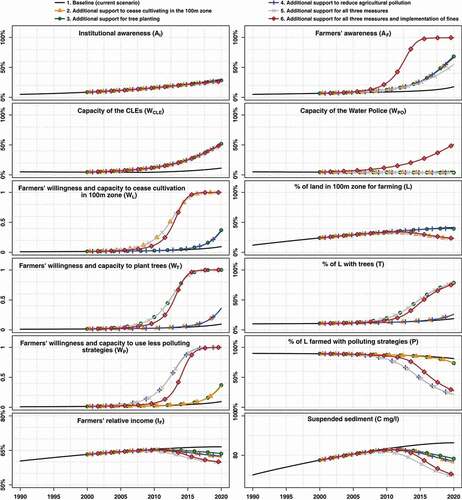Figures & data
Figure 1. Map showing the Black Volta in southwest Burkina Faso and boundaries of the three Local Water Committees (CLEs)/the case study catchments.

Figure 2. Time line of relevant institutional developments in the study catchments (based on Koudougou Citation2018, Somda et al. Citation2019).

Figure 3. Graphical schematic of the socio-hydrological model. Positive/negative signs indicate the positive/negative impact of each variable on the next variable in the direction of the arrow. (Image credits: Polluted lake: iStock.com/acrylic. Sack of money: iStock.com/vladwel. Scales and books: iStock.com/UnitoneVector. Police stop: iStock.com/strelss. Stick figures with puzzle pieces: dreamstime.com/korenyugin52. Stick figure with tree: dreamstime.com/Udo Schotten. Stick figure with watering can: dreamstime.com/Udo Schotten. Sack with flour: dreamstime.com/Evgenii Naumov. Insecticide bottle: dreamstime.com/Mstjahanara903. All other images created by Carr and Barendrecht).

Table 1. Description of the variables
Table 2. Respondents’ perceptions of local water problems (Question: “In your view, what are the key water problems in your catchment or community?”) (after Balana et al. Citation2019)
Figure 4. Factors influencing environmental decision making by farmers (from Mills et al. Citation2017). Reprinted by permission from Springer Nature: Agriculture and Human Values.

Figure 5. Percentage of farmers willing to adopt different management strategies to address (a) siltation due to river bank cultivation and (b) agricultural water pollution from agrochemicals.

Table 3. Initial conditions for each time period of the baseline scenario
Table 4. Parameters and their values used in the baseline scenario. * = value that is fixed and does not change in any scenario
Table 5. Parameters and their values used in the scenarios
Figure 6. Modelled evolution of awareness, institutional capacity, famers’ willingness and capacity to implement measures, and change in land-use and water quality in the study regions for the six scenarios.

